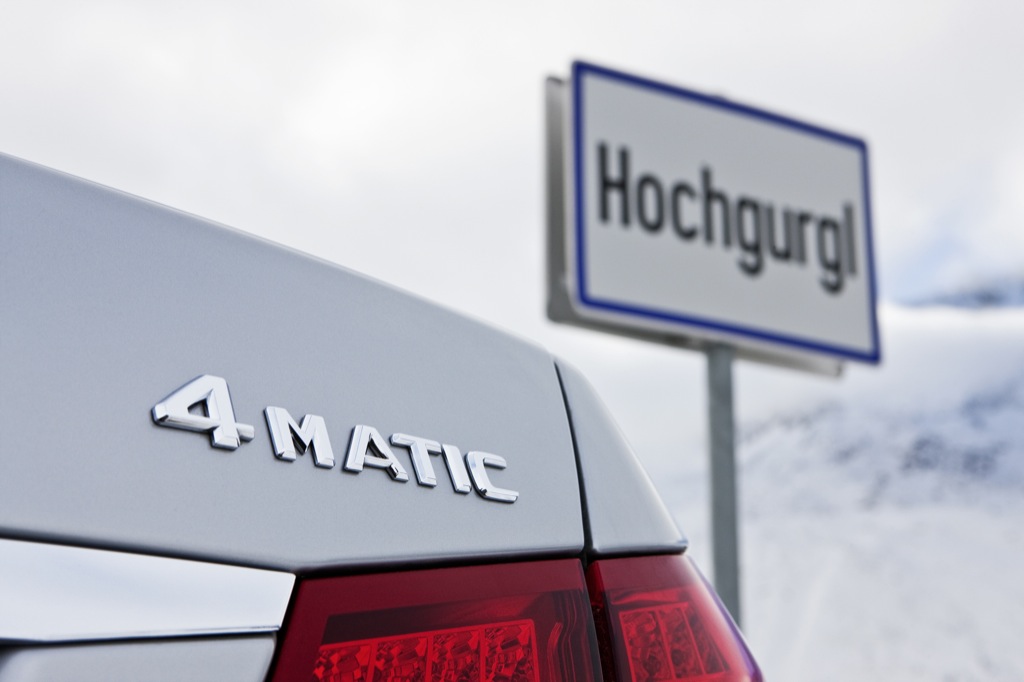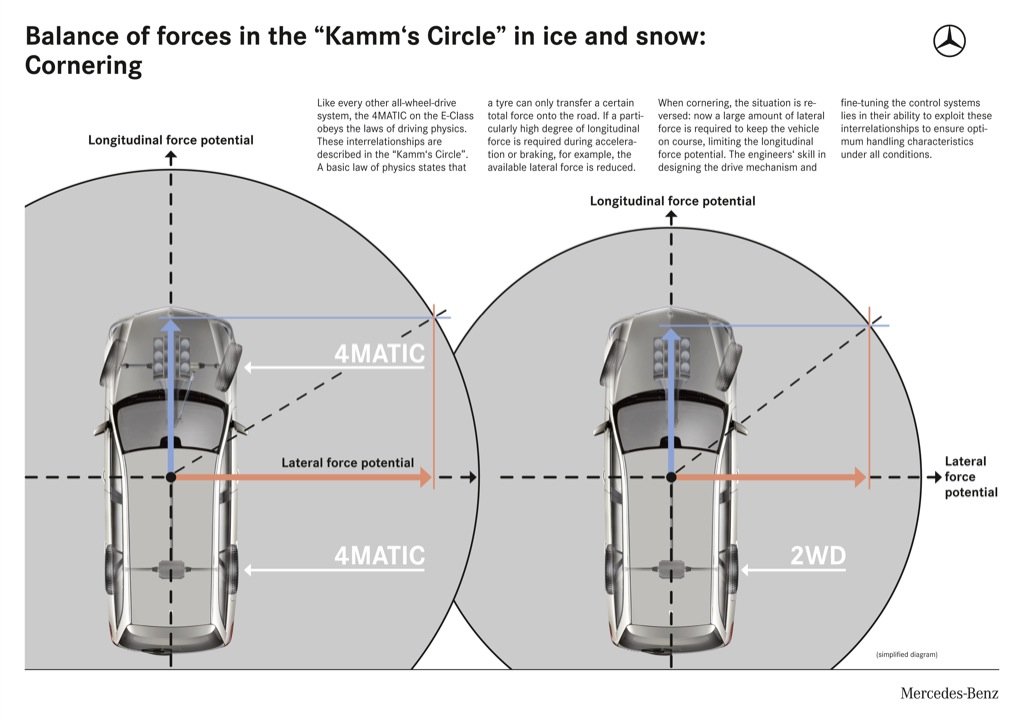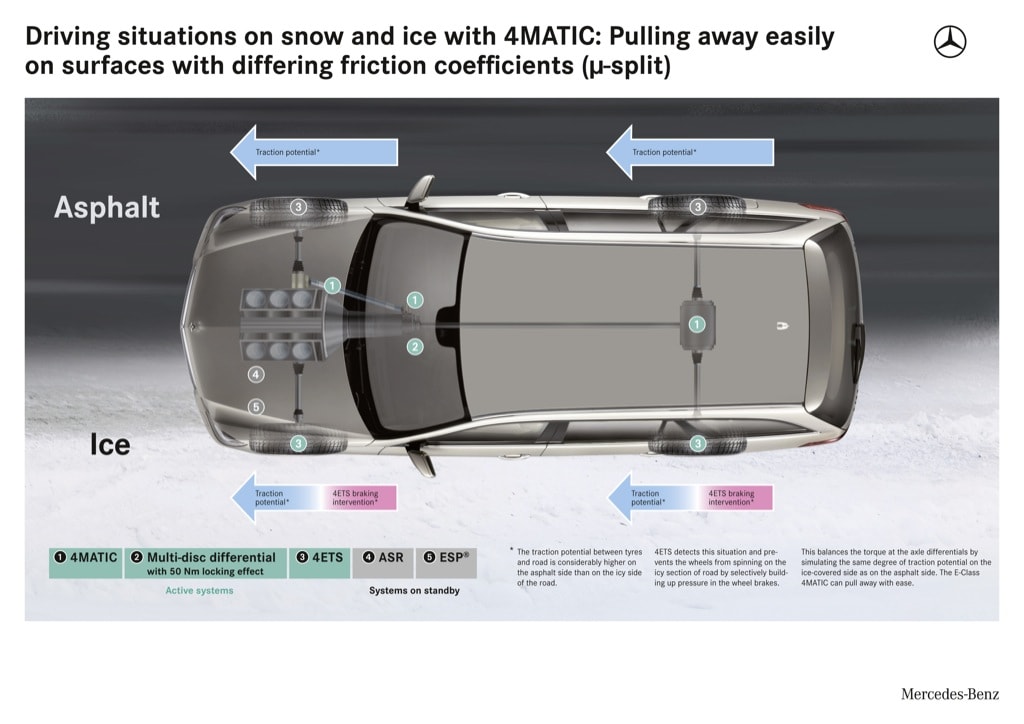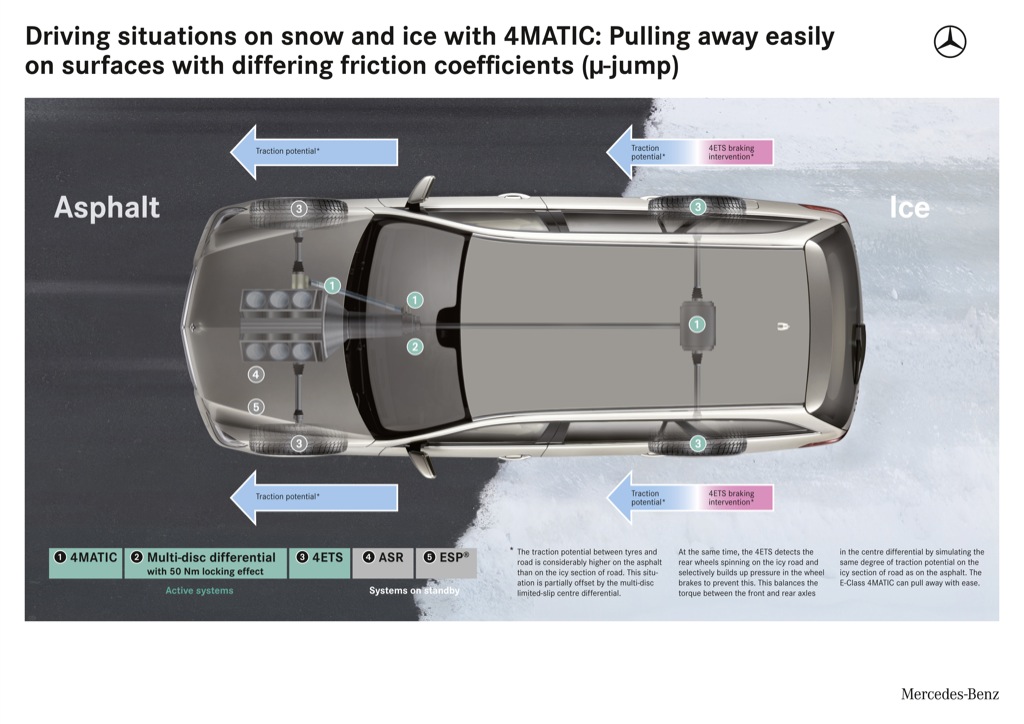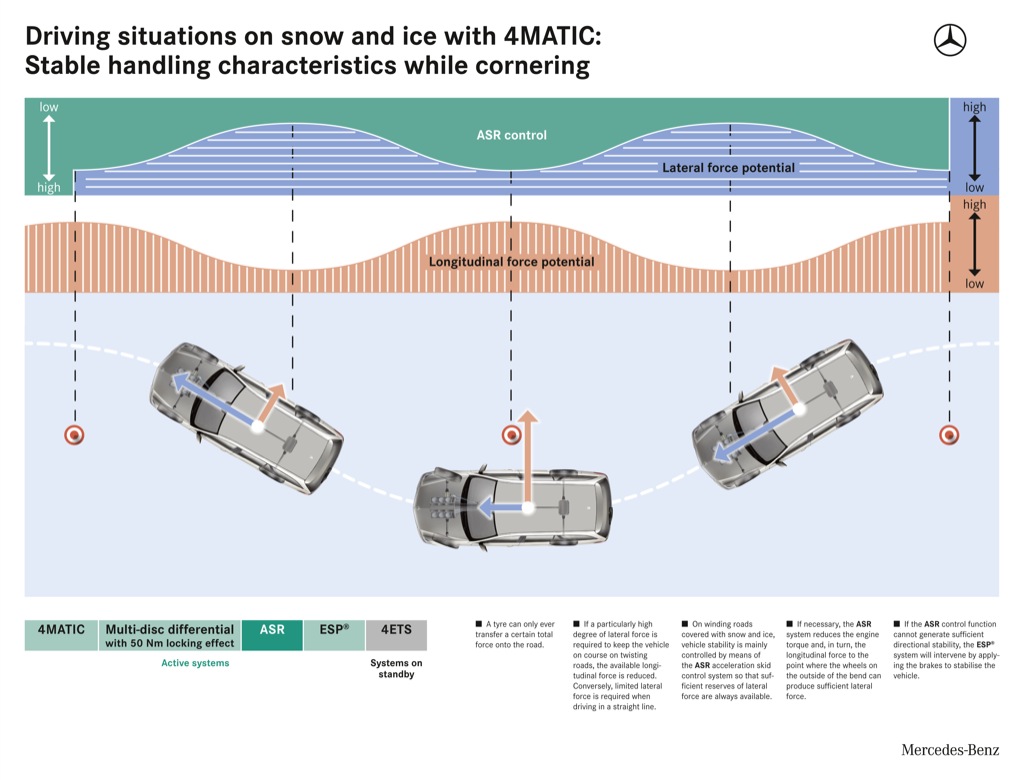The 4Matic (derived from 4wheel-drive and automatic) is the name of the AWD four-wheel drive system developed by Mercedes-Benz, which allows drivers to better handle their vehicle on slippery surfaces, such as snow-covered or icy roads. The system first debuted in the W124 E-Klasse model series back in 1987 and is currently available on 52 Mercedes-Benz passenger car models across nine series which include the E-Klasse, C-Klasse, R-Klasse, S-Klasse, Viano and the brand’s entire SUV range.
The mechanical principle of the 4MATIC system is based on a 45:55 torque split between the front and rear axles and a multi-disc limited-slip centre differential with a basic locking torque of 50 Nm, enabling high levels of traction. First, the dynamic shift in axle load toward the rear axle that occurs during acceleration is harnessed to deliver more drive torque to the rear wheels. Second, the multi-disc differential lock is also able to shift the drive torque between the front and rear axles, varying the split between 30:70 and 70:30 as the road conditions dictate.
The base design concept, with the engine installed longitudinally and the integral transmission and transfer case unit, minimizes frictional losses and improves fuel consumption.
However, the 4MATIC system does not work alone as it is linked with the ESP, 4ETS or ASR electronic control systems. All control system interventions go virtually unnoticed, yet drivers still know straight away if they are driving on the limit, as a yellow warning symbol will flash in the instrument cluster.
Like any other all-wheel-drive system, the 4MATIC abides by the laws of driving physics, whose interrelations are clearly illustrated in what is known as the "Kamm's Circle".
Certain road conditions are automatically detected so the 4MATIC system works to prevent the vehicle from tail-skidding. Therefore, the interventions of the 4ETS electronic traction control system are adjusted to achieve the greatest possible acceleration while minimizing wheel slip, ensuring optimum directional stability in the process.
Therefore, if you happen to face twisting roads covered with snow and ice, the ASR control thresholds are adjusted according to the driving situation based on the vehicle's longitudinal and lateral dynamic readings as continuously measured by the ESP sensor system.
According to the carmaker, in order to comply with this physical correlation, when cornering on road surfaces with a low friction coefficient the control thresholds for engine torque regulation at the wheels on the outside of the bend are reduced so that the tires can develop enough lateral force. If the ASR control function cannot restore directional stability, the ESP system will intervene by applying the brakes to stabilize the vehicle.
In certain wintry conditions it may become necessary to deactivate the control systems using the "ESP OFF" switch, when powering out of deep snow, for instance, either with or without snow chains. Even in "ESP OFF" mode, Mercedes-Benz drivers can still benefit of the control systems when braking, the carmaker says. However, you should have in mind that once back on a road surface with a normal covering of snow, the control systems should be reactivated again.
However, drivers should keep in mind that despite all the engineers' efforts, it is only up to them to determine how safe they are on the road. No matter how good the system is, the driver should not rely entirely on it. Drivers should always adapt their driving style in accordance with the wintry conditions and ensure that their vehicle is suitably equipped and, of course, winter tires are essential.
The mechanical principle of the 4MATIC system is based on a 45:55 torque split between the front and rear axles and a multi-disc limited-slip centre differential with a basic locking torque of 50 Nm, enabling high levels of traction. First, the dynamic shift in axle load toward the rear axle that occurs during acceleration is harnessed to deliver more drive torque to the rear wheels. Second, the multi-disc differential lock is also able to shift the drive torque between the front and rear axles, varying the split between 30:70 and 70:30 as the road conditions dictate.
The base design concept, with the engine installed longitudinally and the integral transmission and transfer case unit, minimizes frictional losses and improves fuel consumption.
However, the 4MATIC system does not work alone as it is linked with the ESP, 4ETS or ASR electronic control systems. All control system interventions go virtually unnoticed, yet drivers still know straight away if they are driving on the limit, as a yellow warning symbol will flash in the instrument cluster.
Like any other all-wheel-drive system, the 4MATIC abides by the laws of driving physics, whose interrelations are clearly illustrated in what is known as the "Kamm's Circle".
Certain road conditions are automatically detected so the 4MATIC system works to prevent the vehicle from tail-skidding. Therefore, the interventions of the 4ETS electronic traction control system are adjusted to achieve the greatest possible acceleration while minimizing wheel slip, ensuring optimum directional stability in the process.
Therefore, if you happen to face twisting roads covered with snow and ice, the ASR control thresholds are adjusted according to the driving situation based on the vehicle's longitudinal and lateral dynamic readings as continuously measured by the ESP sensor system.
According to the carmaker, in order to comply with this physical correlation, when cornering on road surfaces with a low friction coefficient the control thresholds for engine torque regulation at the wheels on the outside of the bend are reduced so that the tires can develop enough lateral force. If the ASR control function cannot restore directional stability, the ESP system will intervene by applying the brakes to stabilize the vehicle.
In certain wintry conditions it may become necessary to deactivate the control systems using the "ESP OFF" switch, when powering out of deep snow, for instance, either with or without snow chains. Even in "ESP OFF" mode, Mercedes-Benz drivers can still benefit of the control systems when braking, the carmaker says. However, you should have in mind that once back on a road surface with a normal covering of snow, the control systems should be reactivated again.
However, drivers should keep in mind that despite all the engineers' efforts, it is only up to them to determine how safe they are on the road. No matter how good the system is, the driver should not rely entirely on it. Drivers should always adapt their driving style in accordance with the wintry conditions and ensure that their vehicle is suitably equipped and, of course, winter tires are essential.
